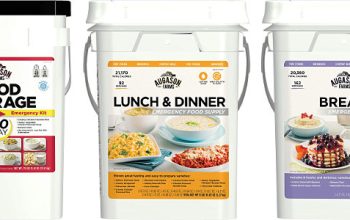Learn how to can cranberry juice. First how to prepare homemade juice then easy canning for storing on the shelf. When cranberries come into season, stock up and use them to make your own cranberry juice! Homemade flavor is SO good.
Make Cranberry juice Homemade
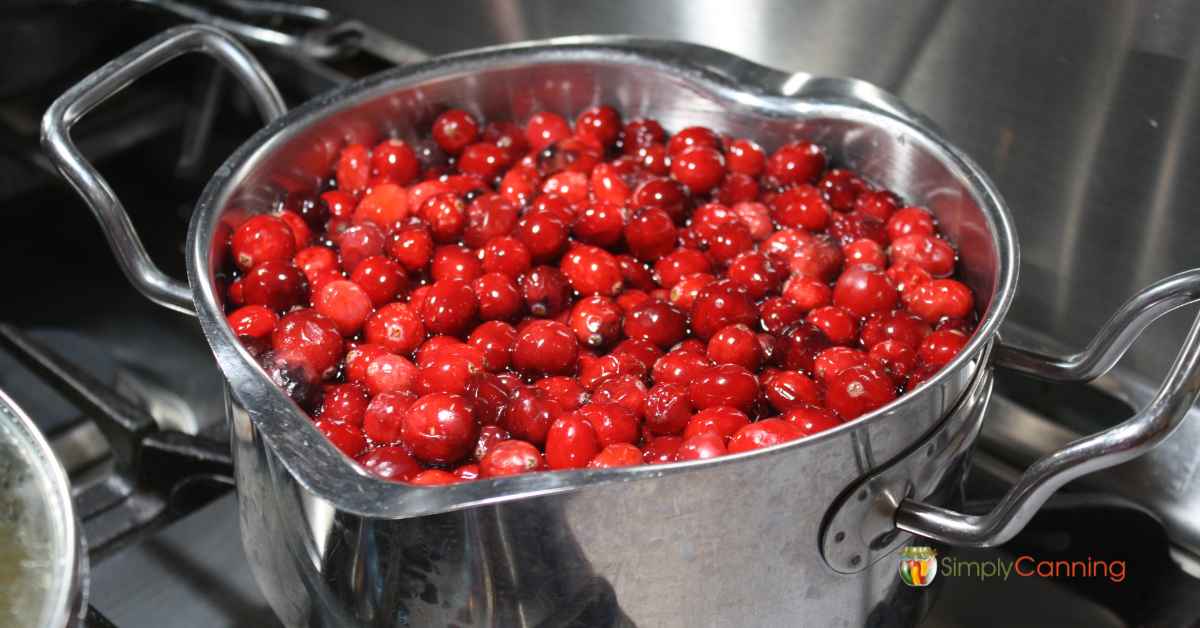
- Sort and Wash: Rinse fresh cranberries thoroughly under cool water. Remove stems, spoiled berries, or debris.
- Cook the Cranberries:
- Add cranberries and just enough water to cover them in a pot.
- Bring to a boil, then reduce heat and cook slowly until the berries begin to split. The berries will release their juices.
- Strain the juice through a damp cheesecloth, jelly bag, or clean tea towel. Again you could press this a bit for more juice, but you’ll get nice clear juice if you don’t press. You can strain a second time with a coffee filter for an even clearer juice. (I didn’t do this step)
- Let the cranberry juice settle for 24–48 hours in the refrigerator. This will allow sediment to settle.
- Remove the juice from the refrigerator without stirring up the sediment. Carefully pour the juice off the top into a large saucepan to heat it up. The goal is to pour off the juice and leave the sediment behind. You can just discard the sediment.
- Add sugar if desired. Heat to dissolve sugar or other sweetener. I do add sugar to mine as cranberries are tart. You can also use honey to sweeten. This is to taste and is optional.
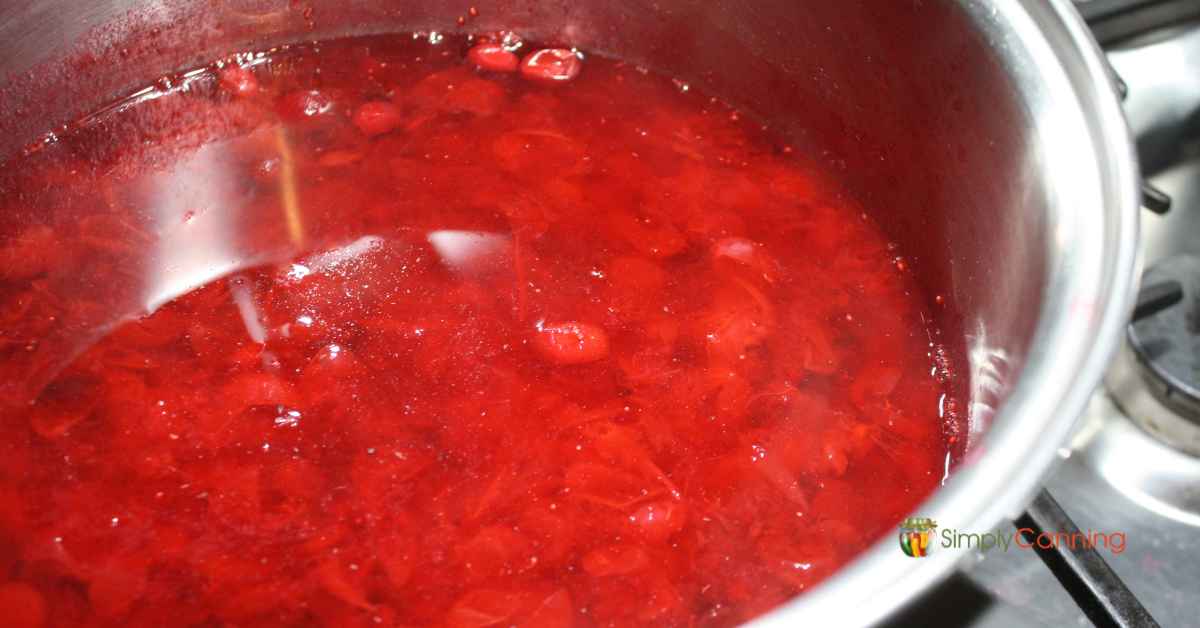
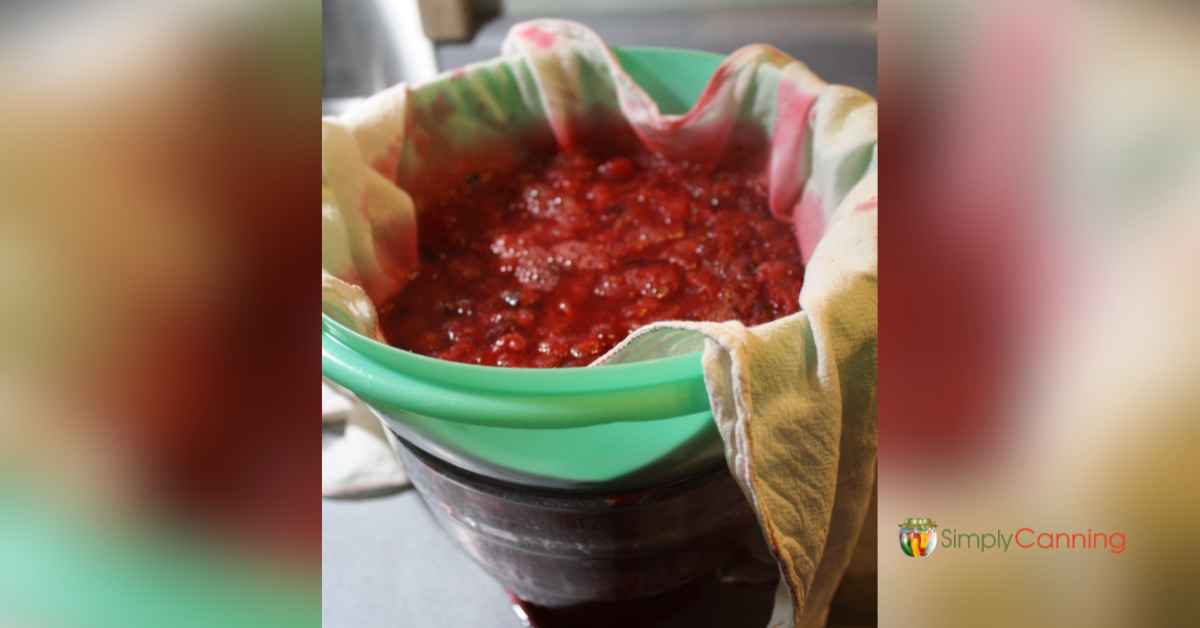
Using Frozen Cranberries
Commercially frozen cranberries are typically cleaned and stem-free, so you can skip the sorting step. If you’re using home-frozen cranberries, inspect and rinse them if needed.
Use frozen cranberries directly or thaw slightly before cooking. I just add them to the pot with water and start heating. Follow the same process as with fresh cranberries.
Adding Flavor
Consider adding a cinnamon stick or a few whole cloves when you add the sugar and heat the juice. These ingredients can create a festive twist. Be sure to remove them before canning.

You Don’t Have to Can It
Canning is optional. You can stop at this point, and simply store your juice in the refrigerator for immediate use. The juice can be sweetened to taste and used as is.
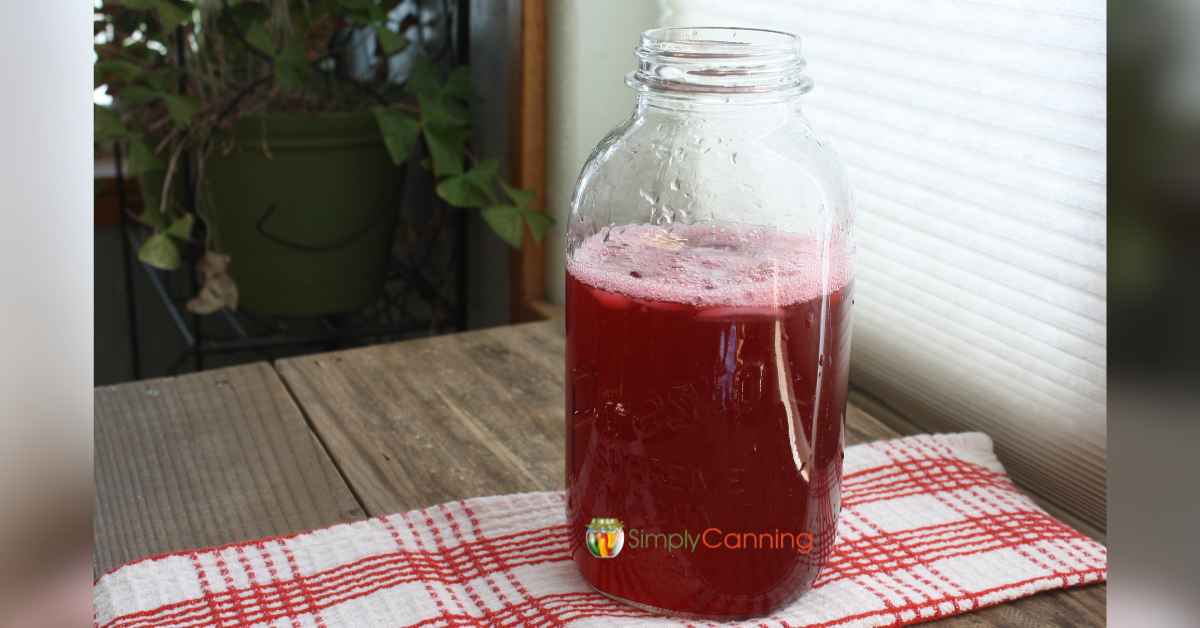
How to Can Cranberry Juice: A Step-by-Step guide
Here are the canning instructions, I’ve got some frequently asked questions below so don’t forget to scroll down a bit too.
Yield
How much cranberry juice can you expect to make? On average, you’ll need about 1.5 pounds of cranberries to yield 1 quart of juice. For pints, plan on roughly 0.75 pounds of cranberries per jar.
Know Your Canner
Cranberry juice can be processed using boiling water bath canning or steam canning. These methods are ideal because cranberry juice is naturally high in acidity. Check out “How to Use a Water Bath Canner” or “How to Use a Steam Canner” for detailed instructions on setting up and safely using your equipment.
Directions below are for a water bath. Steam canning has the same processing time.
Frequently Asked Questions
Allowing the juice to rest in the refrigerator for 24–48 hours helps sediment settle at the bottom of the container. This makes your cranberry juice clear and smooth, without any gritty texture from the sediment.
Leftover cranberry pulp can be used with other recipes. Add it to baked goods, stir it into oatmeal, blend it into smoothies, or turn it into homemade fruit leather (combine with applesauce). You can also freeze the pulp for future use in sauces or marinades.
Yes! Cranberry juice is packed with nutrients and phytochemicals that make it healthy in moderation. Plus, by canning your own juice, you control the sugar content and avoid added preservatives.
Store jars of cranberry juice on the shelf for about a year. Once a year passes, don’t throw it away–just pull it to the front of the cupboard and make a plan to use it up soon.
While I didn’t use the steam method, if you’re juicing other types of fruit, you might want to invest in a steam juicer like this one!
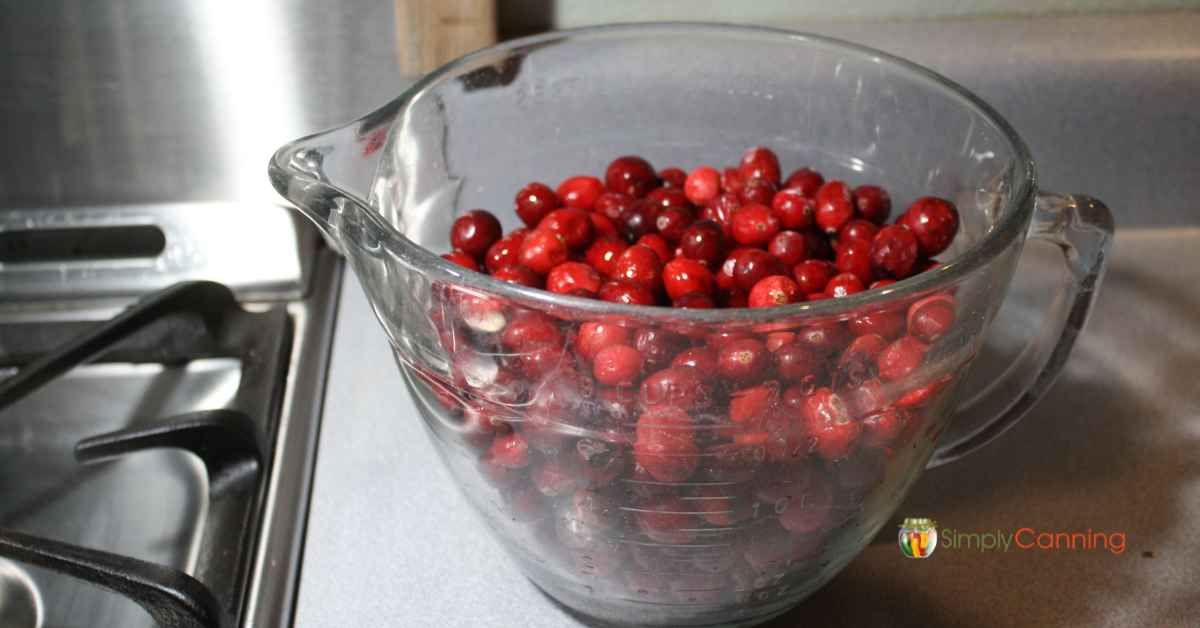
Sources:
https: //www. bernardin.ca/recipes/en/cranberry-juice.htm?Lang=EN-US


